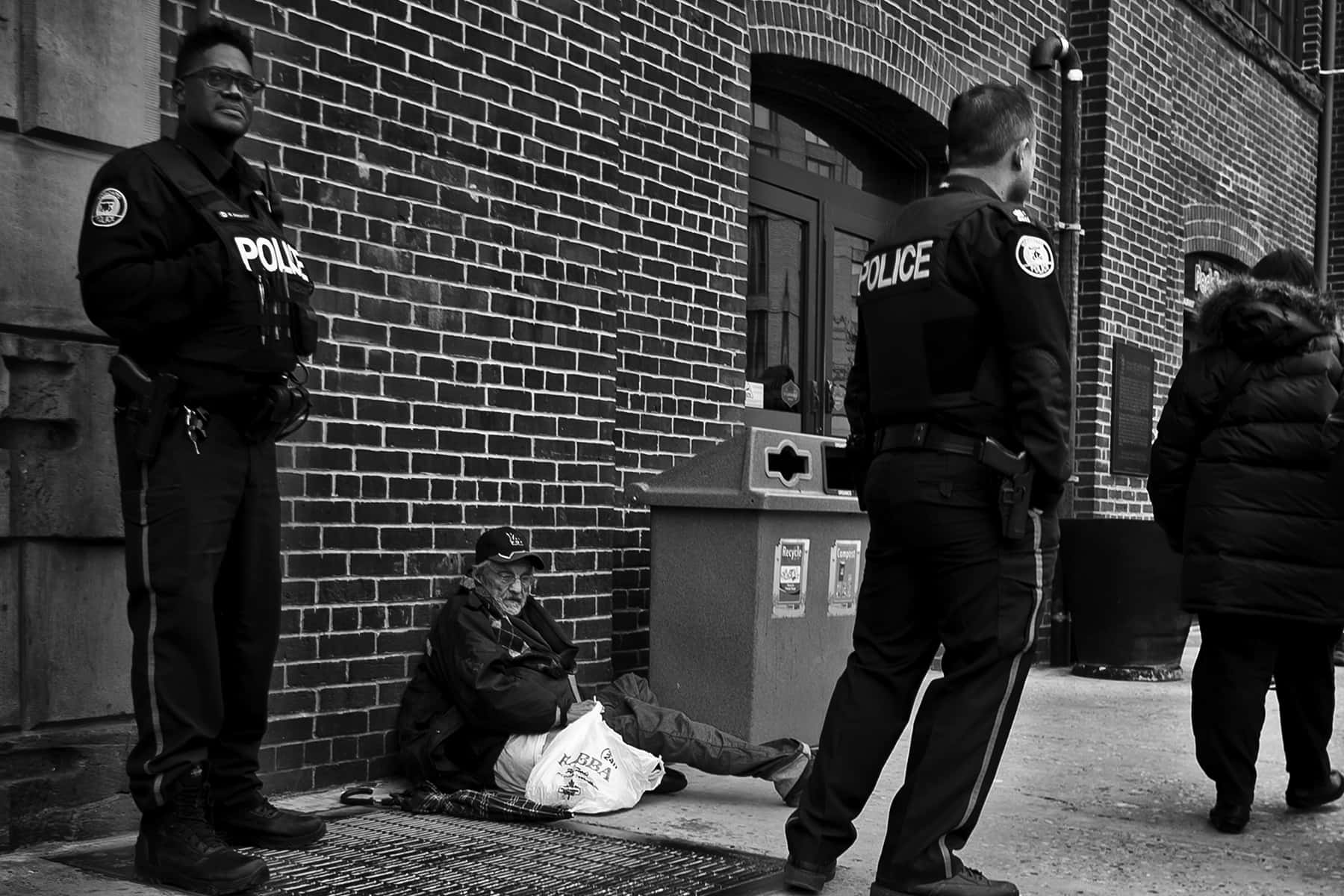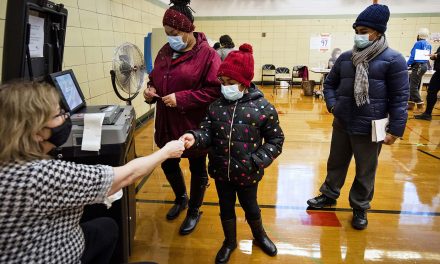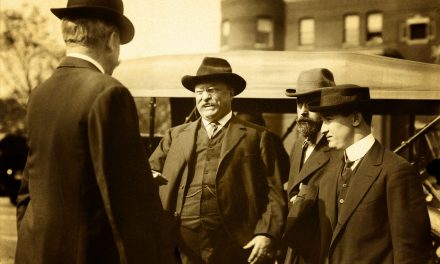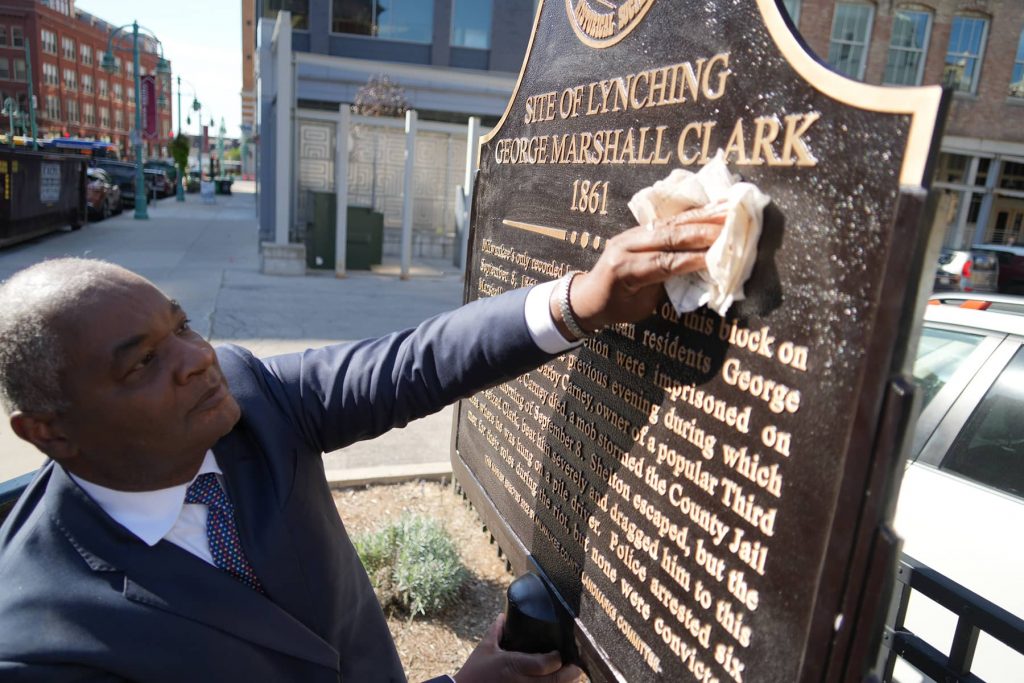
More than two months since the beginning of a national reckoning over criminal justice and policing, it sometimes seems as though advocates from every side of the debate have settled into their respective corners.
After some initial progress on policies such as removing cops from schools and shifting municipal budget priorities — the debate in Wisconsin has slowed as activists continue to march in the streets and legislative leaders continue to say action will not come until at least the fall.
But there is a policy idea that has the potential to gain traction among cops and Black Lives Matter activists alike — getting the police out of the business of responding to mental health crises. For activists, armed officers responding to people experiencing a mental health crisis is a recipe for disaster. Since 2015, 5,480 people have been shot and killed by police and 22% of them — 1,226 — were in a mental health crisis, according to a Washington Post database of fatal police shootings.
“We absolutely think that dealing with, responding to and supporting people who are experiencing mental health crises or unwellness should in no circumstances be dealt with by policing,” said M Adams, co-executive director of Freedom Inc. “It’s antithetical to standard mental health recommendations. They are licensed to kill, they are sanctioned by the state to be able to carry out murder, death, bodily harm. None of the things I just named are good for mental health crises.”
The police come at this issue from a different angle, but by no means do they completely disagree.
For the cops, responding to mental health calls is stressful, time consuming and expensive. These mental health calls have become increasingly common as treatment resources have dwindled. Officers regularly escort people in the throws of a crisis to a single in-patient mental hospital near Oshkosh — regardless of where they are coming from. This can take an officer off patrol for up to 12 hours, longer than a typical shift, which means the municipality needs to pay for overtime and another patrol officer to cover the shift.
“The vast majority of officers, they’re largely limited to the Winnebago Mental Health Institute near Oshkosh. [It’s an] enormous drain on resources, diminishes an agency’s staffing,” said Jim Palmer, director of the Wisconsin Professional Police Association, says.ntinues. “There’s been some legislative interest in this. I also think this would be a perfect area for a committee to explore and develop models for alternatives to crisis intervention police — social workers, mental health professionals.”
If Adams and Palmer sat down in a room they would disagree over specifics, but the fundamental structure of the policy is there. Instead of having the police respond to these calls, send an entirely different team of first responders who are trained and equipped to de-escalate the situation and help the person.
If a building is on fire and someone calls 9-1-1, the fire department arrives. If someone has a heart attack and 9-1-1 is called, paramedics will arrive. So, if someone is having a mental health crisis, why not have — as Palmer put it — social workers and mental health professionals arrive?
Adams put it more plainly. A mental health crisis is a health problem that requires a health-based solution.
“Would we be sending in police to cure cancer?” Adams said. “Why would we have a cancer department of the police?”
This also is not a new idea. Since 1989, an initiative run by the White Bird Clinic in Eugene, Ore. called Crisis Assistance Helping Out On The Streets (CAHOOTS) has been filling this role. The program is dispatched through the 9-1-1 and police non-emergency line.
When a call comes in, an unarmed team of two with a medic and a crisis worker arrive on the scene. In 2019, CAHOOTS was sent to 20% of the calls for service. In only 250 of those 24,000 calls were police officers called for backup, according to a CAHOOTS media guide. The program is estimated to save more than $20 million per year.
“I think policing may have a place within this system, but I also think that it’s over-utilized as an immediate response because it just comes with a risk,” CAHOOTS Crisis Worker Ebony Morgan said on NPR’s All Things Considered. “And it’s a risk that crisis response teams that are unarmed don’t come with. You know, in 30 years, we’ve never had a serious injury or a death that our team was responsible for.”
Policymakers in Wisconsin have been thinking about this issue as well — with bipartisan cooperation.
In October 2019, Wisconsin Attorney General Josh Kaul held a summit on “Emergency Detention and Mental Health.” Law enforcement, healthcare professionals and mental health advocates came together to discuss the trauma caused, as well as the time and money spent, when the cops need to drive someone to Winnebago.
In February, Governor Tony Evers signed into law Act 105. The bill, authored by State Representative Mark Born (R-Beaver Dam), allows municipalities to contract with third-party vendors when a person needs to be transported to a mental health facility. While it does not take the cops out of the response to the crisis, it was a small step closer.
“Putting someone in a mental health crisis in the back of a sheriff’s car isn’t the best idea to start,” Representative Dave Considine (D-Baraboo) said at the time.
Since Governor Evers signed the bill, obviously a lot has changed and issues surrounding Wisconsin’s systems for health and policing have been unmasked — the scope of necessary and possible policy solutions have broadened. Palmer said he wants the WPPA to be a driver of the discourse over the role of policing in Wisconsin and that he believes changes are necessary. He said opening regional mental health centers and creating a CAHOOTS-like pilot program are possible solutions.
The WPPA has also had conversations with members of the Wisconsin Legislative Black Caucus and plans to release a list of policy proposals soon, according to Palmer. But, with two months already gone since the killing of George Floyd, he does not think major action will be taken this year.
“I’m not terribly optimistic and that’s not something I’m necessarily pleased about,” Palmer said. “We want to be an agent of change to collaborate with advocates and interested parties. If we don’t do anything, we’re just dooming ourselves to repeat the same kind of controversies. We can’t continue to find ourselves in the same place, there’s got to be some changes, we want to be a part of that and we think we can have a constructive role in that. We’re not always going to agree, but as long as we agree we need to maintain the dialogue, that’s the best way to facilitate change.”
Adams, who sees something like taking the police out of mental health response in the scope of a much larger goal to defund the police, said it was not unreasonable anymore to think that the cops should not be responsible for certain types of problems.
“Here’s the thing, I’m an abolitionist, but I think reasonable people can conclude policing shouldn’t be used for a set of functions. I think CAHOOTS is an example of what could be. That is a model we should look to,” Adams said. “We’re here with policing because [the police have] been heavily invested in. We could better fund preventative healthcare, these issues could be caught at the ages of onset. People have comprehensive care. Instead of hiring people to kill people, they could create a different jobs program of city workers, cultural workers, health workers, therapists that people could be inside of and have a different role and relationship in society.”
Adams was more optimistic that change is coming this year. Advocacy at the local level in Madison has already paid dividends for activists and the budget process is about to start, so why not push for a policy similar to CAHOOTS?
Neil Moralee
Originally published on the Wisconsin Examiner as The policy idea BLM activists and cops agree on
Donate: Wisconsin Examiner
Help spread Wisconsin news, relentless reporting, unheard voices, and untold stories. Make a difference with a tax-deductible contribution to the Wisconsin Examiner













